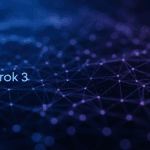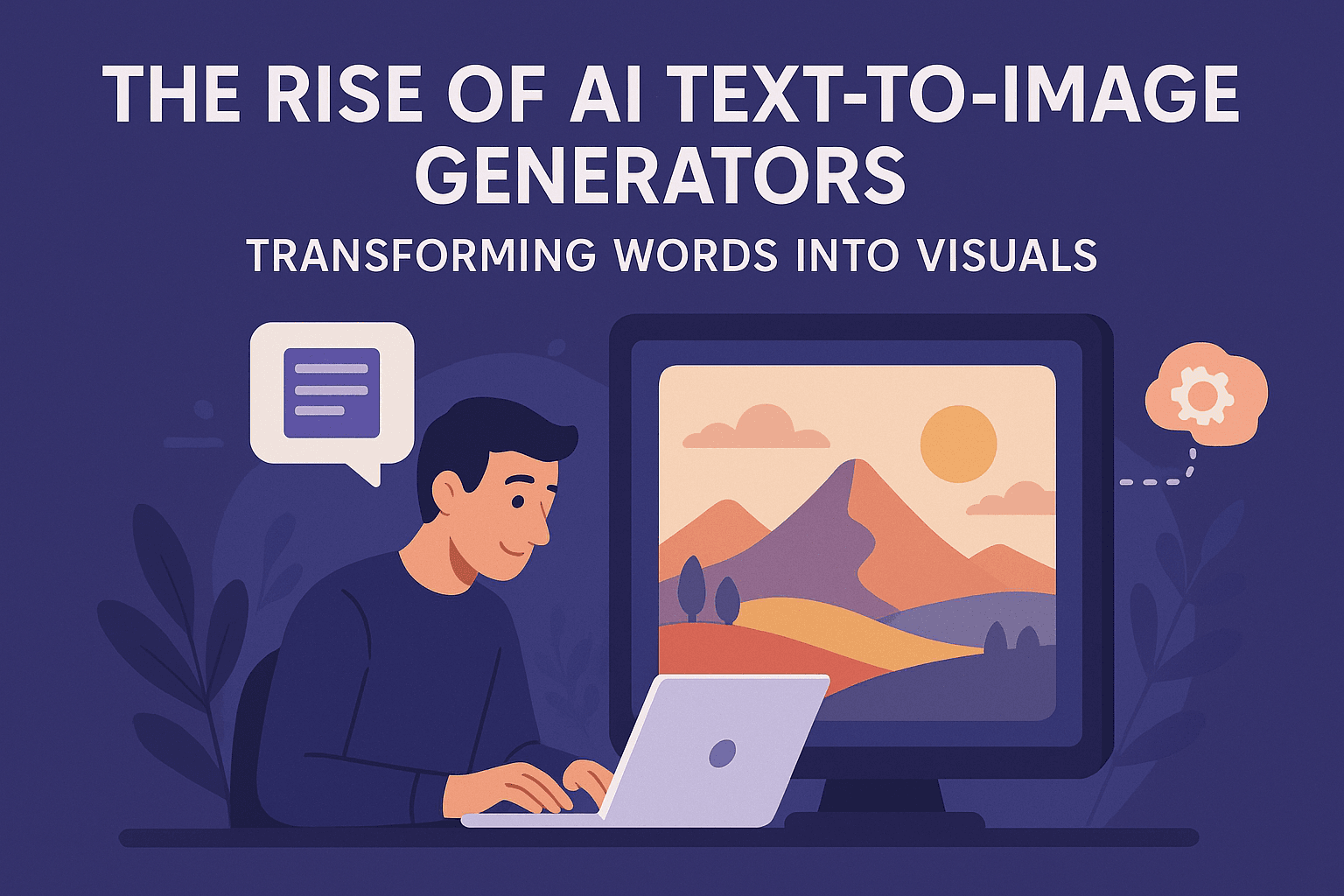Podcast: DeepSeek V3_ The Flawed Giant Reshaping AI and Geopolitics
The Silent Shockwave
In the hyper-publicized world of artificial intelligence, where every model release is heralded by elaborate marketing campaigns, DeepSeek V3 arrived like a silent shockwave. There was no grand announcement, no slickly produced video—just a new model appearing on the open-source platform Hugging Face, where it quietly climbed to the top of the trending charts before its official documentation was even available.1 This unceremonious debut belied the model’s significance. DeepSeek V3 is not merely an incremental update; it is a fundamental disruptor that represents a “Sputnik moment” for the open-source community, challenging the long-held assumption that frontier-level AI performance is the exclusive domain of closed, proprietary systems.3
The emergence of this powerful new contender forces a critical re-evaluation of the entire AI landscape, a landscape now defined by a series of core tensions: the staggering performance of the model versus its revolutionary low cost; the promise of open access versus the perils of diminished ethical control; and the sheer force of technological advancement versus the inescapable realities of geopolitical influence. This report delves into the architecture that makes DeepSeek V3 possible, analyzes its benchmark-shattering performance, and explores the profound strategic and ethical implications of its release.
I. The Architecture of a Titan: A Look Under the Hood
DeepSeek V3’s remarkable capabilities are not the result of a single breakthrough but a cascade of compounding efficiencies in its design. Its architecture is a masterclass in balancing immense scale with computational feasibility, allowing it to achieve performance that rivals its far more expensive competitors.
The Power of Sparsity: Mixture-of-Experts (MoE) at Scale
At the heart of DeepSeek V3 is a Mixture-of-Experts (MoE) architecture, a design that decouples a model’s total knowledge from the computational cost of using that knowledge.4 While the model boasts a colossal 671 billion total parameters, it only activates a small fraction—approximately 37 billion—for any given task.4 This is achieved by dividing the model into specialized “experts” and using a routing mechanism to direct each piece of incoming data only to the most relevant ones.
This sparse activation is the key to its efficiency. It allows the model to possess a vast repository of knowledge comparable to the largest proprietary systems, but with the inference cost of a much smaller model.8 The V3 architecture is an even more aggressive implementation of this concept than its predecessor, increasing the number of routed experts per layer from 160 in V2 to 256, significantly expanding the model’s capacity for knowledge and memory.8
Innovations in Efficiency and Training
Beyond its core MoE structure, DeepSeek V3 incorporates several pioneering techniques to maximize performance and minimize cost:
- Multi-head Latent Attention (MLA): Inherited from DeepSeek V2, MLA is a sophisticated attention mechanism that compresses the Key-Value (KV) cache—a primary memory bottleneck in large language models. This innovation drastically reduces memory overhead and accelerates inference speed, which is crucial for handling the model’s massive 128k token context window efficiently.8
- Auxiliary-Loss-Free Load Balancing: To prevent a common MoE problem known as “routing collapse,” where data is repeatedly sent to the same few experts, previous models used auxiliary loss functions to enforce balanced distribution. However, this could degrade performance. DeepSeek V3 pioneers a new strategy that eliminates these losses, instead using a manually adjusted bias term to guide the routing. While this results in less-balanced expert usage, it ultimately leads to higher overall model quality by not compromising the primary training objective.8
- FP8 Mixed Precision Training: Perhaps most significantly, DeepSeek V3 is the first major open-source model to be trained at scale using FP8, a lower-precision numerical format. This approach halves the memory required compared to the more common BF16 format and doubles the computational speed on modern GPUs like NVIDIA’s H800s. This technical feat was instrumental in making the model’s training economically viable, costing an estimated $6 million—a fraction of the $100 million or more spent on models like GPT-4.8 The entire training process required just 2.788 million H800 GPU hours, a new benchmark for efficiency.13
- Multi-Token Prediction (MTP): Unlike traditional models that predict one token at a time, DeepSeek V3 was trained with a Multi-Token Prediction objective. This allows it to predict several tokens simultaneously, which not only improves performance but also enables faster inference through a technique called speculative decoding. This contributes directly to its impressive generation speed of approximately 60 tokens per second, a threefold increase over its predecessor.12
Scale and Scope: The Foundation of Knowledge
The model’s advanced architecture is built upon an enormous foundation of data. It was pre-trained on a 14.8 trillion token dataset, a significant increase from the 8.1 trillion tokens used for V2, with a notably higher concentration of mathematical and programming data.4 This vast and specialized training corpus, combined with a 128k token context window, allows the model to ingest and reason over entire codebases, lengthy technical documents, or even book-length texts in a single session.1
The combination of these architectural choices—MoE for scale, FP8 for affordability, and MLA/MTP for performance—creates a model that is not just powerful but economically viable to train and deploy. This fundamentally challenges the notion that frontier AI is a capability reserved only for the world’s most well-funded technology giants.
II. Performance by the Numbers: A New Challenger for the Throne?
While the architecture is impressive, a model’s true measure is its performance. Here, DeepSeek V3 makes its most compelling case, delivering results that not only lead the open-source field but also directly challenge the top proprietary models, particularly in the critical domain of software development.
The Coding Champion
The most startling evidence of DeepSeek V3.1’s prowess comes from the Aider benchmark, a practical test that measures a model’s ability to autonomously handle real-world coding tasks. In this evaluation, V3.1 achieved a score of 71.6%, placing it ahead of formidable competitors like Anthropic’s Claude 4 Opus.1 This result is not merely a statistical victory; it signals a shift in the landscape, demonstrating that an open-source model can outperform a leading closed-source incumbent on a complex, practical task. This dominance is reinforced by strong scores on other coding benchmarks, including HumanEval and LiveCodeBench, and is corroborated by developer feedback praising its fluency and high one-shot pass rate on complex logic.2
Beyond Code: A Versatile Powerhouse
DeepSeek V3’s capabilities extend well beyond programming. Its training regimen, rich in mathematical and reasoning data, has yielded exceptional performance in these areas. The model scores highly on benchmarks like MATH-500 (90.2%) and AIME, showcasing its ability to handle complex logical problems.4 This is partly due to an innovative post-training process that distills the advanced reasoning capabilities of DeepSeek’s specialized R1 series directly into the V3 model.14
In general language understanding, it also holds its own. On the widely respected MMLU benchmark, the chat version of V3 scores 88.5%, competitive with other top-tier models and not far behind the rumored capabilities of GPT-5.1
The Economic Equation: Performance per Dollar
The most disruptive aspect of DeepSeek V3’s performance is not just its quality but its cost. A complete programming task on the Aider benchmark costs approximately $1.01 to run on DeepSeek V3.1. According to community analysis, this is 60 to 68 times cheaper than running the same task on a proprietary system like Claude 4, which it slightly outperforms.1 This radical cost-performance differential fundamentally alters the economic calculation for developers and businesses looking to integrate high-end AI.
| Metric | DeepSeek V3.1 | Claude 4.1 Opus | GPT-5 | Llama 3.1 405B |
| Aider (Polyglot) Pass Rate | 71.6% | ~70.6% | N/A | N/A |
| SWE-Bench Verified | 42.0% | N/A | N/A | 24.5% |
| MMLU-Pro (Accuracy) | 75.9% | N/A | N/A | 73.3% |
| MATH (EM) | 61.6% | N/A | N/A | 49.0% |
| Cost per Aider Task (Est.) | ~$1.01 | ~$60 – $70 | N/A | N/A |
| API Input Cost ($/1M tokens) | $0.27 | $15.00 | N/A | N/A |
| API Output Cost ($/1M tokens) | $1.10 | $75.00 | N/A | N/A |
Data compiled from sources.1
This stark comparison reveals the model’s true value proposition. It offers a slight performance edge in key areas for a monumental reduction in cost, making frontier-level AI accessible on an unprecedented scale.
III. The V3.1 Evolution: The Dawn of the Hybrid AI
The release of the V3.1 variant marked more than just a performance tune-up; it signaled a strategic pivot in DeepSeek’s architectural philosophy. This update saw the model evolve from a system with distinct, specialized modes into a unified, “hybrid” intelligence designed for a future dominated by autonomous AI agents.
Unifying the Skillset: The “Hybrid Architecture”
The most significant change in V3.1 is the adoption of a “hybrid reasoning model”.1 Previously, users of DeepSeek’s chat interface could toggle a switch to engage “DeepThink (R1),” a mode that activated a separate, specialized reasoning model. With V3.1, this toggle was removed.1 The model now integrates its chat, reasoning, and coding capabilities into a single, seamless architecture that automatically selects the appropriate depth of reasoning for a given task. This approach aims to provide the power of a specialized reasoner without the computational overhead on simpler queries.2
The Language of Agents: New Special Tokens
Further evidence of this strategic shift lies within the model’s tokenizer. The V3.1 update introduced new, undocumented “special tokens”: <|search begin|>, <|search end|>, <think>, and </think>.1 The native inclusion of these tokens strongly suggests a built-in, first-class capacity for the model to perform internal chain-of-thought planning (
<think>) and to initiate searches for external information (<search>). This is a clear architectural commitment to building more sophisticated, autonomous AI agents that can formulate plans, gather data, and execute multi-step tasks without constant human guidance.22
A Community Divided: The Hybrid Debate
This move toward a unified hybrid model has been met with a mixed reception from the developer community. While some praise the convenience and efficiency of a single, powerful model, others express concern that this “do-everything” approach might compromise peak performance in specialized domains.2 These concerns are not unfounded; the developers of the competing Qwen model, for instance, have explicitly chosen to maintain separate models, citing performance degradation in their hybrid experiments.2 Indeed, some users report that while V3.1 excels at technical tasks, its creative writing abilities have noticeably declined compared to previous versions, suggesting a potential trade-off has been made.26
The shift from a user-selectable reasoning mode to an integrated, autonomous one, combined with the introduction of agent-oriented tokens, points to a clear strategic direction. DeepSeek appears to be betting that the future of AI lies not in perfecting conversational chatbots, but in building versatile, autonomous agents capable of complex work. The V3.1 architecture is the foundation for that future.
IV. The “Sputnik Moment”: Reshuffling the Global AI Deck
The release of DeepSeek V3 is an event with implications that extend far beyond technical benchmarks. It represents a watershed moment for the open-source movement and has sent tremors through the geopolitical landscape of AI development.
The Open-Source Offensive
For years, a key justification for the high cost and closed nature of frontier models from labs like OpenAI and Anthropic has been the implicit argument that such performance is impossible to achieve otherwise. DeepSeek V3’s performance-to-cost ratio shatters that argument.3 By demonstrating that an open-source model can match or exceed proprietary counterparts for a tiny fraction of the cost, DeepSeek has severely weakened the competitive moat of the established players. As one analysis put it, “exclusivity is gone”.27 The model immediately set a new, much higher bar for what the global community can and should expect from open-source AI.21
Democratizing Frontier AI
This development has the potential to democratize access to cutting-edge AI on a massive scale. By releasing the model’s weights under a permissive license, DeepSeek empowers individual developers, academic researchers, and startups to build applications that were previously only financially and technically feasible for large corporations.28
This democratization also has a distinct geopolitical dimension. The emergence of a top-tier model from a Chinese company challenges the perceived technological dominance of US-based AI labs.15 It suggests that efforts to slow AI progress through measures like technology export controls may be less effective than anticipated, as demonstrated by DeepSeek’s ability to achieve remarkable training efficiency on less advanced hardware.3
The success of DeepSeek V3 accelerates the commoditization of raw AI intelligence. As state-of-the-art performance becomes cheaper and more accessible, the basis of competition in the AI market is forced to evolve. The central question shifts from “Who has the smartest model?” to “Who offers the most trustworthy, secure, and ethically aligned ecosystem?” It is on this new battleground of trust and safety that DeepSeek’s origins and design choices become its greatest liability.
V. The Unavoidable Asterisk: Navigating a Minefield of Risk and Bias
For all its technical brilliance, DeepSeek V3 is a deeply flawed model burdened by significant performance quirks, overt censorship, and a host of legal and security risks. Any comprehensive assessment must weigh its impressive capabilities against these considerable drawbacks.
Performance Pitfalls and Quirks
Despite its high benchmark scores, the model exhibits several weaknesses in practical use. It performed poorly on the “Misguided Attention” evaluation, a test designed to detect overfitting, solving only 22% of “trick questions.” This indicates a tendency to rely on patterns from its training data rather than carefully attending to the specific nuances of a prompt.33 Users have also reported that the model can be “stubborn,” getting stuck in repetitive loops and ignoring corrective feedback from users—a flaw not typically seen in top-tier Western models.33 Furthermore, as noted previously, the V3.1 update, while boosting technical skills, appears to have degraded the model’s creative writing abilities, leading to more clichéd and less nuanced output.26
The Great Firewall of AI: Censorship and Political Bias
The most alarming flaw in DeepSeek V3 is its clear and systematic pro-Chinese government bias. Multiple independent analyses have confirmed that the model refuses to answer questions on topics politically sensitive to the Chinese Communist Party (CCP), such as the 1989 Tiananmen Square massacre, while readily providing praise for the CCP and its leaders.32 This is not a subtle, unconscious bias inherited from the data; it is an explicit, hard-coded censorship that aligns the model with the political objectives of the Chinese state.
This bias extends to its worldview. A security analysis from the Center for Strategic and International Studies (CSIS) found that DeepSeek recommends more “hawkish” and escalatory foreign policy actions, particularly in scenarios involving the United States and other Western nations.3 This raises serious concerns about its potential use in any decision-making or analytical capacity. The model’s training is further revealed by its occasional use of the pronoun “we” when describing the Chinese government’s position, a linguistic tic that suggests it was trained on a large volume of state-sponsored material.32
A Labyrinth of Legal, Privacy, and Security Risks
For enterprise users, adopting DeepSeek V3 introduces a host of legal and security challenges. The platform’s terms of service are notably user-unfriendly, placing all legal liability for the model’s output on the user, granting DeepSeek broad rights to use all inputs and outputs for its own purposes (including model training), and offering no indemnification for issues like copyright infringement.37
Compounding this is a critical data sovereignty issue: all data processed through DeepSeek’s online services is stored on servers in China, making it legally accessible to the Chinese government.37 This presents an unacceptable espionage and intellectual property risk for most Western organizations. Finally, the model’s safety guardrails appear to be weak. One security audit found that the DeepSeek R1 model, which shares a base with V3, had a 100% failure rate on the HarmBench dataset, meaning it failed to refuse a single harmful prompt. This suggests that the model’s cost-efficient training methods may have come at the expense of robust safety mechanisms.40
The low monetary cost of using DeepSeek V3 masks a much higher strategic cost. For any organization, particularly in the West, using the model involves sending potentially sensitive data—proprietary code, business strategies, customer information—to a Chinese entity, where it can be used to train a model that is demonstrably aligned with the geopolitical and ideological objectives of the Chinese state.
Conclusion: A Flawed Behemoth
DeepSeek V3 is a model of profound contradictions. It is, without question, a monumental achievement for open-source AI. Its release proves that world-class performance and radical training efficiency are not mutually exclusive and are no longer the exclusive purview of closed, Western-led labs. It is a technical marvel that has reshuffled the global AI deck.
At the same time, it is a deeply problematic and risky technology. Its impressive technical specifications are undermined by a troubling lack of safety guardrails, an overt and undeniable pro-CCP bias, and data privacy policies that are untenable for most enterprise users outside of China.
Ultimately, the arrival of DeepSeek V3 forces the AI community to confront a new and uncomfortable reality. The choice of which AI model to use is no longer a simple calculation of performance and price. It is now a complex strategic decision that must account for security, data sovereignty, and ideological alignment. The era of politically neutral AI tools, if it ever truly existed, is now definitively over. DeepSeek V3 is the flawed behemoth that makes this new reality impossible to ignore.


